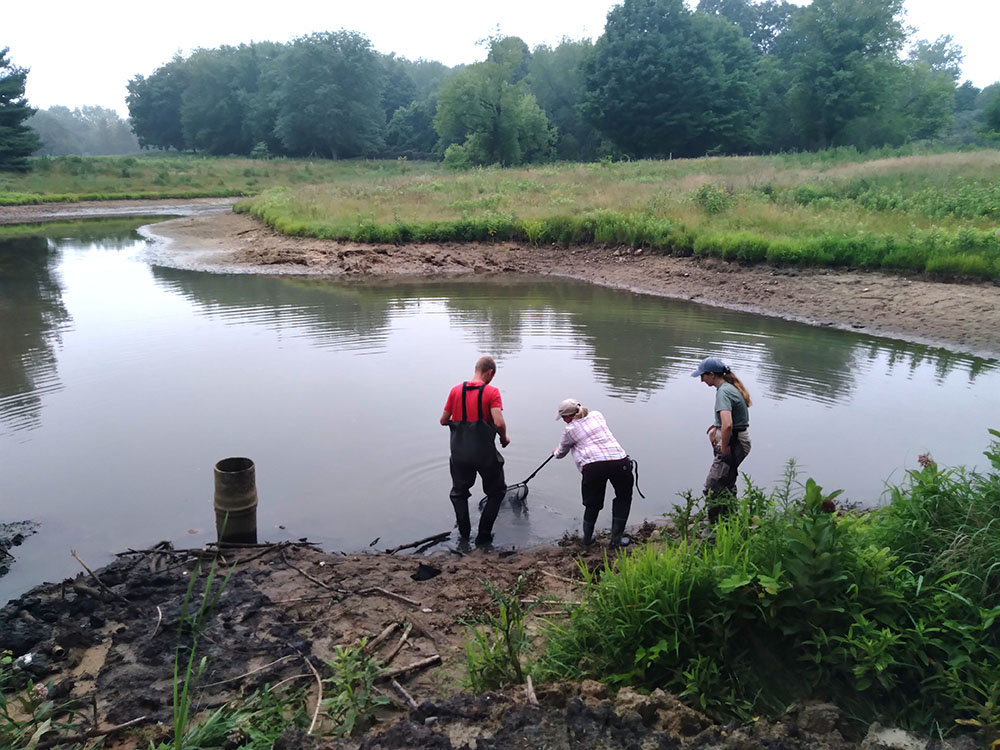One of the water features at The Highlands is not like the others.
In the northeast corner, there is a three-acre koi pond—a relic from the property’s past life as a golf course. If you’ve hiked near there, you have likely caught a glimpse of the koi that have inhabited the pond for years.
Part of the plan to transform The Highlands into a more natural state includes making this pond, originally designed as a water hazard for golfers, into a wetland that provides much-needed habitat for native birds and wildlife.
“Currently the koi pond offers surprisingly little when it comes to wetland habitat,” said Land Conservancy of West Michigan Stewardship Specialist Lucas Dykstra. “Its abrupt change from upland to aquatic habitats offers no room for wetland plants and the wildlife that use them. Restoring it will provide a valuable spring-fed wetland system that will lead to an explosion of biodiversity in that portion of the property.”
Thanks to our partners at the U.S. Fish and Wildlife Service, we were able to embark on this project this year.
The first step was to install a water control structure, which enables us to control the water level of the pond. USFWS’s Gib King rented a mini-excavator and worked with the Land Conservancy of West Michigan’s stewardship team to install the structure.

The next step was to lower the water level of the pond. But before we got too far with that, we needed to make sure the koi are safely removed. We contacted an aquatic nursery professional to find new homes for the koi and set about an attempt to catch them.
It turned out to be quite a challenge.
The floor of the pond is nearly waist-deep muck. The koi love this, but it means it’s very difficult to walk around in. LCWM’s stewardship team tried many methods to extract the koi, including setting sail in a makeshift boat to avoid walking on the floor of the pond. In the end, we were only able to remove six koi.




We will have to wait to rehome the remaining koi until the fall, when Gib returns with heavier-duty equipment. We’ll use this equipment to manipulate the hydrology of the pond to facilitate capturing the koi. Once they are off to their new homes, we can get to work creating a wetland. At that point, we’ll draw the water level down further and begin to move some earth around.
“We’ll build some islands and some peninsulas, some features to give the wetland as much shape as it can have. We’ll give it as much variation as it can have with different elevations and soils and hydroperiods or wetness along the fringes,” Gib said.
We’ll also add in some structure in the form of dead trees to provide perches for turtles and birds and then later plant some native vegetation, all of which will help support a myriad of reptiles, amphibians, insects and birds.
At the same time, Gib will also add two more new wetlands in other areas at The Highlands. We are grateful for his partnership along with USFWS, NAWCA, GLRI and Ducks Unlimited to transform a heavily manipulated landscape into one that supports the biodiverse cast of critters that call West Michigan home.


Comments are closed